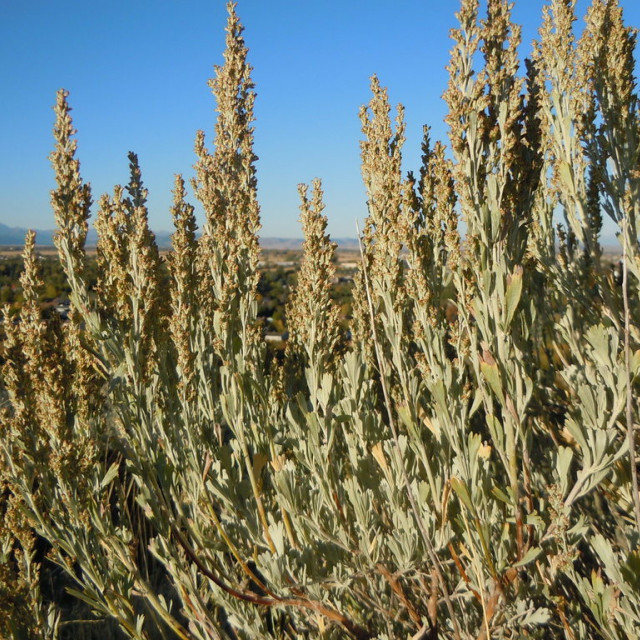COMMON NAME
Big sagebrush
SCIENTIFIC NAME
Artemisia tridentata
ALSO KNOWN AS
Great Basin sagebrush, sagebrush
Plant family
Aster (Asteraceae)
Plant group
Broadleaf Evergreens
Big sagebrush is a perennial, woody, evergreen shrub, growing to from .5-3m tall, with a taproot growing 1-4m deep.
104 reports
43+
OBSERVERS
104+
OBSERVATIONS
Identification hints
The leaves of big sagebrush have a strong turpentine-like odor, especially when wet. It usually keeps some of its leaves throughout the year, but loses many leaves in the late summer.
Did you know?
Sage grouse depend on big sagebrush for food more than any other species. Up to 70 to 75% of their diet is composed of the leaves and flower heads of big sagebrush. Antelope and mule deer also eat big sagebrush leaves and stems during the fall, winter, and spring. A variety of birds can also be found hiding in the brush provided by sagebrush, including sage grouse, sharp tailed grouse, prairie sparrows, chukar, quail, and gray partridge.
DISTRIBUTION IN TH U.S.
Arizona
,
California
,
Colorado
,
Idaho
,
Massachusetts
,
Montana
,
North Dakota
,
Nebraska
,
New Mexico
,
Nevada
,
Oregon
,
South Dakota
,
Utah
,
Washington
,
Wyoming
HABITAT
Big sagebrush is common in habitats with dry soils, and on desert slopes, including valleys and slopes 984 to 9842 ft (300 to 3000 m) in elevation and higher.
ATTRIBUTES
Leaves
Big sagebrush leaves are wedge-shaped, becoming wider towards the leaf tip, generally 1-3 cm long, but sometimes as long as 6 cm. Leaves usually have 3 or 5 teeth at the tip, although sometimes the leaf tips are rounded. The surfaces of the leaves are silvery to gray-green and covered with dense hairs. If you crush and smell the leaves, you will find that they are very aromatic
Flowers
Flowers are yellow, just 2-2.5 mm in diameter, and borne in dense clusters that are located towards the ends of the stems. They are usually rather inconspicuous, so take a close look!
Fruits
The fruits of big sagebrush are small brownish colored single seeded fruits (achenes) with sparse hairs.
Bloom Time
Buds typically form in June; flowering and seed ripening occur in the fall.
See Menu
- 2021 Chicago Botanic Garden. All Rights Reserved.
-
Creative Commons
BY-NC-SA 4.0 - Terms of Use
- Privacy Policy
- Data Sharing and Citation Policies
- 2021 Chicago Botanic Garden. All Rights Reserved.



